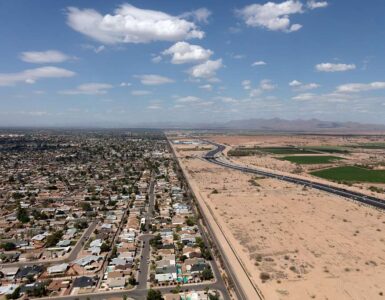In an effort to reduce disparities between the haves and have-nots when it comes to solar energy, Arizona utility regulators approved a measure that could increase solar energy projects in low-income multifamily housing.

Arizona Corporation Commission (ACC) members unanimously approved a proposal by Arizona Public Service (APS) to allow for “master metering” for solar power at low-income multi-family housing. Under previous rules, utilities and developers were limited in their ability to use master metering, which involves measuring the electric usage of multiple tenants with the same meter.
The goal is to increase solar in Arizona and open up more options for neighborhoods where renewable energy is scarce, said Chairwoman Lea Márquez Peterson.
“I was proud to put this on the agenda for the commission’s discussion and vote. It’s the next step for solar energy in Arizona,” Márquez Peterson said.
APS and commissioners want to spur more solar power in multi-unit housing within the utility’s service territory that primarily leases to lower-income or very low-income residents as defined by the U.S. Department of Housing and Urban Development (HUD) Public Housing Program.
Regulators hope to encourage solar in underserved neighborhoods
The new measure shifts the financial incentive to conserve energy from tenants to property owners and property managers. While property owners would foot the bill for solar installation, in the long run it could benefit both owners and tenants with lower energy costs, commissioners said. Meanwhile, tenants would still be in full control of their own thermostats.
Ultimately, it could allow landlords to provide low-income housing to more residents at a lower cost, Márquez Peterson said.
Solar typically limited to white, higher-income households
Low-income residents have largely been left out of the increase in solar energy, whether rooftop or community solar projects, research shows. Solar subscribers in the U.S. typically have been higher-income households or are businesses, universities and government agencies.
Less than half of U.S. community solar projects have any participation from low-income households. Of projects that do include lower-earning families, only about 5 percent involve a sizable share, or more than 10 percent, according to a November 2018 survey by the nonprofit Smart Electric Power Alliance.
On average, Black- and Hispanic-majority census tracts have significantly fewer rooftop solar projects than white-majority or no-majority census tracts, according to an analysis published in Nature Sustainability.
States and utilities taking steps to reduce inequities
To address the inequities, states and utilities have been instituting programs to push for more solar policies to help lower- and middle-income households.
At least a dozen states and Washington, D.C. have developed financial incentives and pilot programs to make it easier for low-income participants to access shared solar, according to the Clean Energy States Alliance, a national nonprofit coalition of public agencies and organizations working together to advance clean energy.
Arizona now ranked fourth in nation for solar
Meanwhile, Arizona is ranked fourth in the nation for solar powered electricity generation, according to a report by the U.S. Energy Information Administration. Arizona’s big utilities — like APS, Salt River Project (SRP) and Tucson Electric Power — are behind the ranking as they invest in renewable energy infrastructure and programs including rooftop solar, solar plants and community solar projects.
SRP doubling its solar commitment
In that vein, SRP announced this week that it plans to more than double its 2025 utility-scale solar commitment to add a total of 2,025 megawatts (MW) of new utility-scale solar energy to its power system by the end of fiscal year 2025, driven in part by dedicated customer demand for new renewables.
This is more than 1,000 MW beyond SRP’s original 2025 commitment of 1,000 MW, announced in November 2018. As part of this 1,025 MW solar increase, 450 MW is enabled by an SRP commercial customer to meet its renewable energy commitments.
“Doubling solar purchases over the next four years supports our shared goals with our customers to be as proactive as possible to reduce our collective carbon footprint while maintaining our reliability and affordability,” said Mike Hummel, SRP’s CEO and general manager.
















Add comment